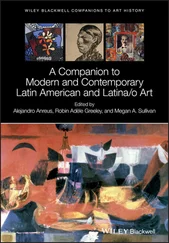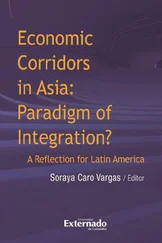This new economic and techno-informational dynamic, built and dependent for its functioning on the web, became widespread in all Latin American countries. Countless corporations were established or reestablished along these lines, and as many forms of negotiation and resistance arose in response. These new extractive corporations are marked by particular characteristics, which vary according to the historical and cultural experience of various countries. They differ widely depending on the types of transnational business in which they participate and, of course, the types of activities they undertake, whether these relate to mining, oil, agriculture, or infrastructure. The types of organization that corporations, states, and regional and local societies adopt are another factor. The dynamics of informational extraction thus vary widely between and even within countries.
Our analysis in this book assumes that “informational extractivism” is inseparable from land. Indeed, the two are not only indissociable; together they produce a new field for historical conflicts that are also expressed in international social networks, given that the environmental impact of extractive forms of exploitation is as global as the corporations that engage in them.
Informational Extractivism
Essentially, “informational extractivism” is a new capitalist dynamic sustained by a techno-economy that operates both on the web and in global centers for the production, marketing, and management of extracted products. We can therefore give these new products metaphorical names: informational copper, informational gas, informational soy, and even informational coca, since these products depend on multiple chains of value. Beyond the exploration and exploitation of natural resources, they incorporate advances in science and technology, dynamic and distinctive forms of specialization, and global corporate and financial networks.
A crucial feature of these new corporations is that, because of the international competition that they face, they are necessarily integrated into systems of innovation that depend on scientific and technological research and that rely on strategic networks and centers. In this sense, considering the scientific and technical capacities of a country, or a region, is crucial to understanding the dynamics and the power of negotiation and integration with these new corporations. As we will show below, the Grobocopatel group, based in the Humid Pampas of Argentina, represents one paradigmatic case, not least because of its links to the university system, which nurtures local systems of production.
Much of the power of these kinds of corporations derives from the dynamism of the market for their products and the international financial system, which also depends on informational networks, chains, and centers. Profits from computerized natural resources are thus the result of a combination of the natural resources themselves with technologies introduced at various stages in the production process to increase profits at greater scales.
In general, informational corporations extract, process, and generate assemblages of products. They are interconnected, moreover, with other corporations that allow them to refine and outsource their activities. From these corporations, they also receive the specialized goods and services necessary to maintain dynamism in business. This dynamism is indispensable to financing, especially external financing, and thus to the expansion of markets that ensures extraordinary rates of profitability. All of this means that corporations require networks and chains of productive, business, and financial exchange that are connected to systems of scientific and technological research, which in turn facilitate productive interaction and success in the market. In this way, extractive informational corporations are gradually positioned in, and integrated into, the global market. For its part, this market is increasingly constituted by competition and various systems of corporate power.
Finally, a crucial element in the functioning of this informational economy is its relationship to politics and communication, especially as a consequence of its environmental effects. Responding to these presupposes the construction of a complex matrix of strategies for negotiation both with nation-states and local governments and with the territorial organizations affected by economic activities. Hence the crucial importance of so-called “governance” for these corporations.
It is worth noting that extractive undertakings are shaped by the environmental characteristics of the territories on which they operate as well as by socio-cultural dynamics and, especially, by the environmental effects that they produce. In corporations located on such territories, there are two main groups of workers. One is made up of highly qualified workers, trained in extractive techniques, with specializations and the ability to handle a wide range of types of information, adapting to changes in information technologies. The other group includes workers who are less qualified and whose work is not central to the activities of computerized corporations. These are temporary workers or those included in a limited way, soon to be replaced by new machines. They are part of the territory and of the social and political relations that are developed on it.
This kind of relationship to territory presupposes a dynamic interaction between nature, which creates and reproduces biodiversity, and a matrix of socio-territorial relationships, often multicultural relationships, that depend on, and frequently destroy, the resilience of nature and its ecological systems. Informational corporations introduce innovations into the process of extractive exploitation, and very often the result is the degradation of the environment, or a reduction in ecological capacities for resilience.
Territories are also social, cultural, political, and institutional constructions. They are spaces connected to regional or local societies, with traditions and cultures that shape relationships with nature. Andean peoples, for example, cultivated a relationship with nature that centered on coexistence at various ecological levels. This is a good example of a fertile interaction between cultures and ecological territories (Murra, 2017 [1969]). Juan Wahren argues that we can “define a territory as a geographic space shot through with social, political, cultural, and economic relations, a space that is constantly resignified by the actors who live in and act on it, creating a territorial stage for conflicts through the appropriation and reterritorialization of space and of the natural resources that are found there” (Wahren, 2011: 12–13).
Various territorial actors tend to act not only on the territories that they inhabit, but also in networks. In such networks, they find support, solidarity, and even financing. Moreover, the effects of environmental degradation that can be directly experienced in a given territory can have global impacts, given their implications for climate change, which affects us all. The United Nations Development Programme’s Human Development Report for 2007–2008 (UNDP, 2007) – like other reports, including the 2006 report on water by the same agency (UNDP, 2006) – noted that the countries that pollute most are those with the highest levels of human development, and those that suffer most from pollution are those that have the lowest levels of human development. Still, the consequences of pollution vary and are felt at a global scale. Every local territory is therefore “glocal,” informational, and a new field for conflicts shaped by concrete experiences.
Let us consider some examples of the workings of informational extraction and its implications for territories.
Читать дальше












